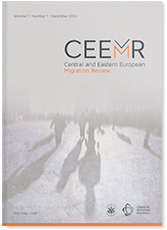The Ethnosurvey Revisited: New Migrations, New Methodologies?
The Ethnosurvey Revisited: New Migrations, New Methodologies?
Author(s): Paweł Kaczmarczyk, Douglas S. MasseySubject(s): Migration Studies
Published by: Ośrodek Badań nad Migracjami / Uniwersytet Warszawski
Keywords: migration research methodology; ethnosurvey; Latin American Migration Project; Polish migration
Summary/Abstract: This article provides a detailed review of the ethnosurvey, a research methodology that has been widely applied to the study of migration for almost four decades. We focus on the application of ethnosurvey methods in Mexico and Poland, drawing on studies done in the former country since the early 1980s and, in the latter, since the early 1990s (including several post-2004 examples). The second case is particularly relevant for our analysis as it refers to a number of novel migration forms that have been identified in Central and Eastern Europe in the post-1989 transition period. Drawing on these studies, we consider the advantages and disadvantages of the ethnosurvey as a research tool for studying international migration. Its advantages include its multilevel design, blend of qualitative and quantitative methods, reliance on retrospective life histories and multisited data collection strategy. These features yield a rich database that has enabled researchers to capture circular, irregular, short-term and sequential movements. Its disadvantages primarily stem from its hybrid sampling strategy, which necessarily places limits on estimation and generalisability and on the technical challenges of parallel sampling in communities of both origin and destination. Here we argue that the ethnosurvey was never proposed and should not be taken as a universal methodology applicable in all circumstances. Rather it represents a specialised tool which, when correctly applied under the right conditions, can be extremely useful in revealing the social and economic mechanisms that underlie human mobility, thus yielding a fuller understanding of international migration’s complex causes and diverse consequences in both sending and receiving societies.
Journal: Central and Eastern European Migration Review
- Issue Year: 8/2019
- Issue No: 2
- Page Range: 9-38
- Page Count: 30
- Language: English

